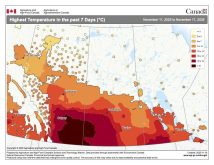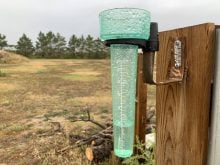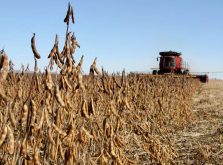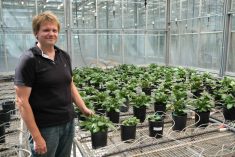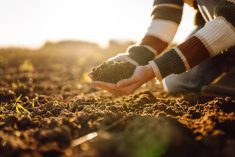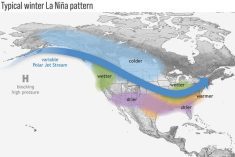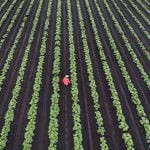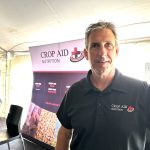Farmers already know what they need to do in the face of a changing climate: adapt.
That’s according to Dr. David Sauchyn, a research professor at the University of Regina. He presented on climate change during the Ranching Opportunities conference in Olds Feb. 7.
Sauchyn explained his research on climate change and specifically the changes in water levels in Alberta over the centuries. He said almost every place in Canada has seen temperatures creeping up over the years.
“There’s quite a difference,” he said of comparing temperatures between now and the 1920s and 1930s.
Read Also
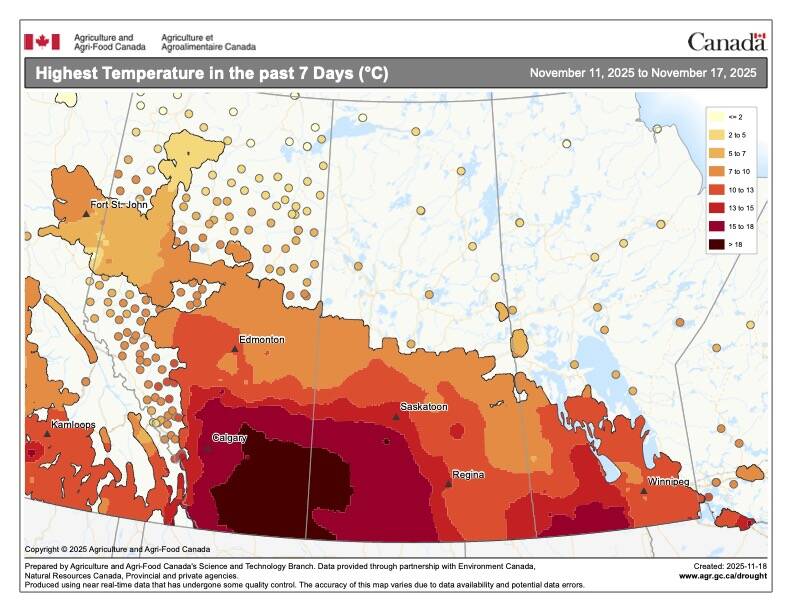
Is a weather station right for your farm?
Weather stations could make a great Christmas gift for the farmer in your life.
He said global warming is a bad term for what’s happening in Canada.
“It’s not as though it’s getting hotter here, it’s just getting less cold,” he said.
The shift in Canada is resulting in a longer frost-free season.
“It’s good news,” he said for our part of the world.
Research into long-term trends for the agroclimatic conditions in the country has shown the growing season is longer and hotter. There’s also more water in Canada, though he said it’s coming at a time when we don’t need it: winter.
“You can expect things to adapt,” he said. The plants and animals will shift, and so will ecological zones.
“Ecosystems don’t move. Plants do,” he said.
Meanwhile the snowpack in the Rockies, which provides most of the water to Alberta, a good chunk of Saskatchewan and even a bit of Manitoba, is shrinking, but not because of less snow.
“We’re actually getting more snow in winter,” Sauchyn said. “The snow is melting in the middle of the winter. We are losing the advantage of the cold winter. Our winters are getting wetter, and our springs and summers are getting drier.”
Cold winters have benefited Canada, helping kill off invasive species like the mountain pine beetle and keeping the snowpack chilled.
Historical cycles
Sauchyn has studied tree rings to determine wet and dry cycles in the Bow River valley since 1107. He said his research shows that there’s often a cycle of 20-30 wet years followed by a similar number of dry ones. For instance, the last really severe dry cycle in Alberta took place just before most homesteaders started to arrive.
He said the history books show correlation with his findings, noting that 1796 appeared to be a really dry year, and at Fort Edmonton they couldn’t move furs because there was no water on the river.
“There’s no doubt it’s going to happen again,” he said of a dry cycle.
Currently Alberta is heading into another wet period.
“Until 2008 water levels were dropping around here,” he said. He used the example of Cooking Lake in Strathcona County. In his youth he’d gone hunting there, and when he went to visit it a few years ago he’d found the lake had disappeared. Now it’s back, as are high water levels elsewhere. Sauchyn said Sylvan Lake’s beach has disappeared due to high levels.
“Starting in 2028, 2030 it’s going to flip,” he said.
However, what used to be natural cycles are being disrupted because of human activity.
“There are no longer natural cycles… nature no longer exists,” he said. “We now determine the state of the world.”
Humans’ impact on the world can be seen in the concentration of carbon dioxide in the atmosphere, he said.
He showed data that indicated while geophysical events like earthquakes or volcano eruptions are not increasing, weather disasters like storms and hail are.
Since the world is unlikely to stop using fossil fuels, adaptation of practices, policies and infrastructure is the solution.
Planning for a drought is not so much preparing for climate change as it is getting ready for a cycle that’s happened before. Sauchyn said global warming just makes it more likely, noting every month since May 1985 has been hotter than average.
While adapting to less water might be a shock for urbanites and industry, farmers are used to it.
“In the agriculture industry, (adapting is) the basis of the agriculture industry,” he said. “A lot of adaptation has already occurred.”


